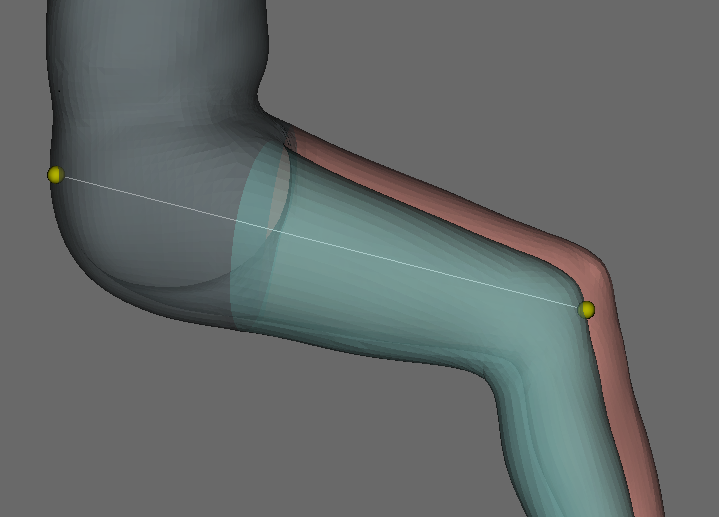 |
PIPER
1.0.1
|
 |
PIPER
1.0.1
|
To scale a Human Body Model (HBM) a set of anthropometric target dimension values can be defined, using for example Anthropo Module. However, those set of target values are not sufficient to provide constraints for transformation module (like Kriging Module). This module aims to interpret this set of anthropometric target dimension values into geometrical constraints to define the scaling HBM transformation. For example, a anthropometric dimension that defines a length is defined using a segment between two landmarks on HBM. This interpretation is performed with help of a Simplified Scalable model. To construct this simplified scalable model, this current provides tools to interactively describe geometrically anthropometric dimensions on HBM and measure anthropometric dimension value. The simplified scalable model is composed of all defined dimensions, organized in tree-like structure to establish relationships between anthropometric dimensions. Applying appropriate scaling transformation according to target value for each dimension following this tree-like structure, equivalent target dimensions are defined geometrically (the position of the target segment). Thus, on both dimensions (defined on HBM and target dimensions), a set of control points can be defined to fully specify a kriging transformation to scale the HBM according to a set of anthropometric dimension target values.
Following types of anthropometric dimension can be defined on HBM using a Simplified Scalable model:
Length and Multilength: a Segment Component needs to be defined on HBM.
Circumference, Width and Depth: a Section Component can be defined on HBM.
A Simplified Scalable model is composed of:
To measure dimensions on HBM, geometrical components can be defined interactively on HBM using this current module.
Common properties of component:
A segment component is defined by a list of via-point (minimum 2). Via-point coordinates are defined as the barycenter of a selection of HBM landmarks (at least one landmark per via-point). The length dimension is computed by the Euclidean distance between the last and the first via-points. The Multilength dimension is defined as the cumulative sum of Euclidean distances between successive via-points that composed the segment component. A local frame is associated to each component to define the scaling transformation. Z axis correspond to the normalized vector defined from the first via-point to the last one.

The section is defined as the intersection between a plane and en entity 2D envelop (can be a skin entity, a bone...). To define the plane, a relative position along a parent segment has to be defined and Z axis of the parent segment defines the normal of intersection plane. For section, Z axis is defined as the normal of the section plan. X and Y axis are interactivly defined. Circumference dimension is computed as the length of the intersection contour. The width is computed as the difference between the maximal Y value and the minimal one in the local section frame. For depth dimension, X direction is considered.

A name is defined for each dimension. The name of anthropometric dimension must correspond to the anthropometric target name to be applied. To compute the scale factor associated to the target value, a reference component is selected. The scaling factor is computed as the ratio between target value and value measured on HBM on the reference component according to the dimension type. Depending of the dimension type, a scaling transformation is defined. Then, this scaling transformation is applied to a list of selected components in their own local frame, after applying parent transformation.
